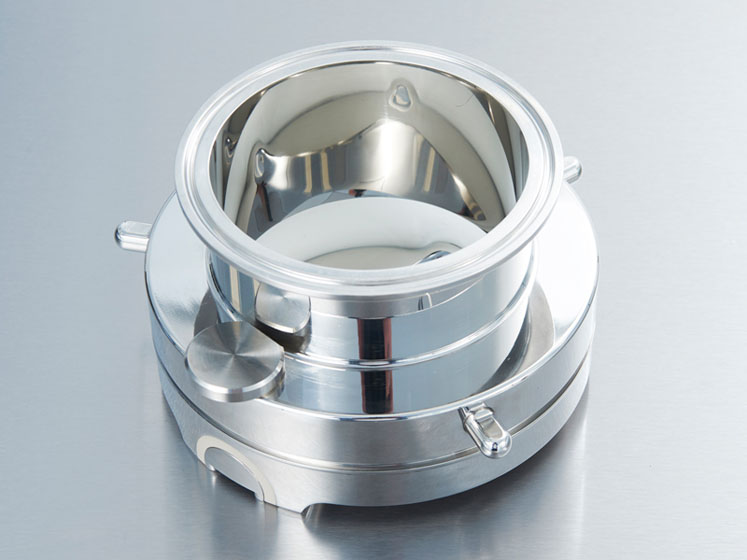Biologic therapies are becoming increasingly commonplace; their growing market share is expected to reach a value of $719.84 billion by 2030 at a compound annual growth rate of 7.8%.1
These therapeutics can be administered parenterally and, therefore, should be manufactured aseptically to ensure sterility. In biopharmaceutical manufacturing, both patient and operator safety are paramount.
Updates to Annex 1 have changed the GMP requirements surrounding the sterile processing of drug products, driving businesses to modify current practices to ensure better control of their manufacturing lines.
This works to safeguard product quality and sterility throughout production, both for sterile and closed GMP-adherent processes.2,3
In this article, Ben Wylie (pictured), Head of Product Management at ChargePoint Technology, will explore how technology is adapting to meet changing regulations, helping to promote safety and maintain product quality.
Adapted to reflect shifts in the regulatory landscape of sterile manufacture and consider technological advances, the revised Annex 1 introduces a contamination control strategy (CCS).
This will stipulate that a company must have a CCS in place for every sterile processing line. Any potential vulnerabilities where containment breaches may occur, such as during product transfer, should be identified and preventive measures put in place to minimise risk.
The CCS document will be live and subject to regular review.
These revised guidelines aim to significantly minimise microbial and particulate contamination within a batch and must be considered throughout processing until the final product is sealed into a vial.4
Team members should all be fully versed in these contamination prevention regulations and receive adequate training to effectively implement them.
Mitigating risk with the help of single-use technologies
The updated GMP regulations aim to help manufacturers to ensure sterile integrity throughout production. Protecting the sterile integrity of these drug powders is essential and can be achieved through the use of single-use technologies (SUTs).
These systems form a barrier between the product and the outside environment, helping to store, transfer and handle products without environmental exposure, reducing the risk of contamination.

As one of the significant risks of contamination occurs during transfer between equipment, businesses are turning to SUTs to mitigate this hazard and retain GMP compliance under Annex 1.
SUT split butterfly valves (SBVs) allow the transfer of a product from one container to another without exposure to the outside environment. In addition to protecting the product from contamination, these SBVs also help to streamline the production process and keep personnel safe.
Overcoming challenges to ensure product quality
Maintaining sterility throughout production can be challenging; strict regulations, cleanroom design, validation and a robust quality control process must all be accommodated to manufacture safe, high-quality products.
Incorporating all the essential protocols into practice must also ensure sterility without compromising output speeds. The pharmaceutical industry is moving towards SUTs to overcome these challenges and efficiently produce safe and efficacious drug products.
From product storage to powder transfer, these systems streamline production lines, can be integrated into current operating systems and optimise quality and performance in a regulatory compliant manner.
Changing to meet demand
SUTs provide the same sterile quality assurance as steel-based equipment without the need for robust cleaning methods or validation; each piece of equipment is disposed of after use. Protecting sterile integrity, these SUT systems significantly reduce the risk of cross-contamination or bioburden within a drug compound.
Production lines are also streamlined; validation and cleaning procedures between batches are no longer required, which saves time and costs. In addition to mitigating the risk of contamination, these adapted systems can help to speed up and ease transfer for the efficient production of biologic materials.
Customisation through innovation
The availability of standard SUT solutions enables production flexibility, as the required option can be obtained off-the-shelf (purchased only when needed) and introduced into production quickly and efficiently.
Available in either sterile or non-sterile alternatives, gamma irradiation of the material post-manufacture is used to introduce sterility.
Manufactured and validated following GMP guidelines, SUTs are ready to use upon purchase.
There are, however, limitations; many SUTs adopt a one-size-fits-all approach with commercially available solutions only fulfilling the most in-demand needs. Tailoring SUTs to the process and the capacity at hand is key to ensure product quality and success.
As such, customised SUTs must be more widely adopted to meet specific manufacturing needs for high-quality and efficient drug production. Designing SUTs with client input can help to drive these solutions, ensuring that the needs of both the customer and the drug product are met.
This can also be invaluable in terms of assessing industry needs, investigating future product development and meeting the changing needs of the biopharma sector.
Quality and efficiency at every stage
Ensuring quality throughout manufacturing is the most efficient way of guaranteeing high-quality products.
Implementing in-process controls confirms that every component of the SUT manufacturing process — from cleanroom operations to individual product standards — meet the intended and required specifications.

Process and batch monitoring can also confirm that products meet these predefined standards. The completion of risk assessments can help to identify and employ preventive measures to mitigate potential risks.
Here, quality control measures have been implemented by significantly reducing the risk of contamination throughout the manufacturing process.
The right partner supports development
Keeping up with changing regulations can be complex, as shown by those brought about by Annex 1. A supportive partner can help to ensure that manufacturing remains regulatory compliant and introduces the necessary changes into practice.
In addition, outsourcing to SUT experts can help to drive innovation, leading to novel solutions that meet specific needs.
With demand increasingly outpacing supply, it is important to establish a robust and steady supply of SUTs to ensure that no disruption to production occurs as a result of shortages, mitigating the risk of supply chain upheaval.
References
- www.globenewswire.com/en/news-release/2022/04/20/2425668/0/en/Biologics-Market-Size-to-Worth-Around-US-719-84-Bn-by-2030.html.
- www.biopharminternational.com/view/the-united-states-and-the-global-biopharma-market.
- www.adamasconsulting.com/blog-of-the-day/annex-1-revisions-what-are-the-changes-and-whom-will-they-affect/.
- www.cherwell-labs.co.uk/eu-gmp-and-annex-1-the-new-version.
